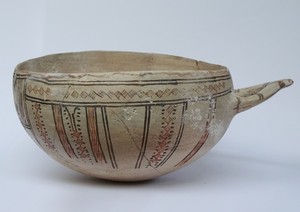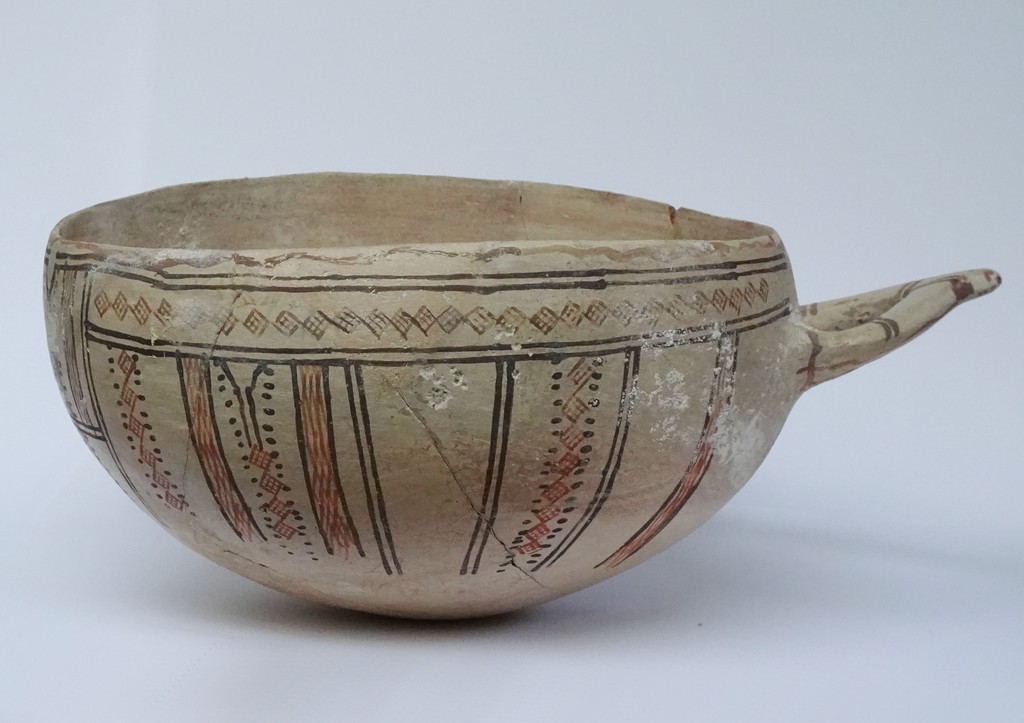Cypriot White Slip I Ware bowl: Late Cypriot I A-B (1600- 1450 BC)
White Slip I, as here, was preceded by Proto White Slip ware early in Late Bronze Age I. White Slip I is rarer, more carefully made and more inventive than White Slip II, and is thus highly prized. This example is repaired from 5 pieces, with some erosion of slip internally, a few small accretions. These bowls, once called “Milk bowls,” may have been modelled on gourds. This example has typically idiosyncratic, bi-chrome painted decoration in red and black with elements symmetrical but irregularly spaced. Most Proto White Slip ware has been found in the West, suggesting that it originated there, but Louise Maguire argued that White Slip originated in the East. In Late Cypriot II, White Slip II Milk bowls became one of the most popular and widely circulated Late Bronze Age types, almost uniquely retaining the Middle Cypriot round bottom.
Hemispherical bowl, slightly in-turning at the top, with wishbone handle. Pale cream-buff slip with red and black, finely painted decoration. Below the rim a wavy red line, then two double black lines containing a chain of small, hatched red diamonds. This band broken adjacent to handle and also opposite it, where two slightly converging, vertical double lines are linked by double lines forming a cross, its top split in a Y, which cuts the top double line. This element flanked by red dots, themselves flanked above the horizontal by double verticals containing red cross-hatching. Symmetrically each side of this complex feature, extending below the top band: (1) a column of red diamonds cross-hatched, with black dots each side (2) a similar column, the top diamonds replaced with a double line splitting in a Y. This is flanked each side by a pair of vertical black lines enclosing red cross-hatching. (3) Three spaced out double vertical lines, the last two flanking an element as (1). (4) Two verticals enclosing red cross-hatching. (5) Below the handle a vertical double line dividing in a Y, flanked by elements as (4), flanked by double vertical under each handle-terminal. Double lines across handle and two wavy lines along underside.
Unpublished. Cf./Notes: British Museum 1886,0605.1 ; P Astrom 1972, Pl.LXXX (3); D Morris 1985 p38 pl.30b; p312-322 (pattern analysis); Maguire 2009;
Size: 9.8 x 24.8 x 19.3cm
(From personal collection of BL (known to me personally but name withheld on request), acquired from Chris Martin 1992.)
(Aquired Acquired by DJ from BL December 2023.)
(DJ 258 AN 238)

